MI EXCEL WORK IS A STATEWIDE SCHOOL IMPROVEMENT INITIATIVE designed to fill in student achievement gaps, and ensure students are receiving a top-notch education across the board by narrowing in on the school that needs it the most.
“We joined the MI Excel (Blueprint) work in December of 2015,” explained Corri Nastasi, Hazel Park’s Webb 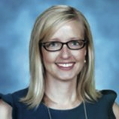 Elementary School Principal. “Our district was invited to learn about this work due to the fact that at the time we had a school – Hoover Elementary – on the Focus Schools list for the state.”
Elementary School Principal. “Our district was invited to learn about this work due to the fact that at the time we had a school – Hoover Elementary – on the Focus Schools list for the state.”
School Board Trustee, Rachel Noth added, “Three years ago we had a district that was struggling. We had found out that we were in deficit, central office staff had resigned, and we had to think about the future of our District.
During that time, we worked with Oakland Schools and the State of Michigan to get a deficit elimination plan together. Once that was set, we then went through the grueling process of hiring a superintendent. Fortunately, we were able to find Dr. Amy Kruppe. Dr. Kruppe and some of our staff went to a conference where Grant Chandler was speaking about MI Excel. When they came back they were really inspired about the program, and knew that it could help our District. From there, the board adopted the MI Excel framework.”
In order to bring the curriculum up to state standards at Hoover by building capacity needed to increase student achievement and decrease achievement gaps, administrators decided to implement MI Excel. “The 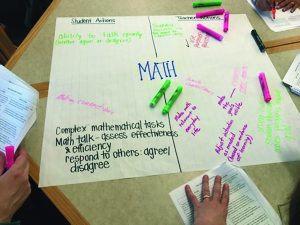 work we are doing involves an overhaul of how we do business – a systemic reconfiguration,” Nastasi explained. “MI Excel has developed a blueprint of systems that are proven through research to be effective. There is a specific plan for different stages throughout the implementation process. The focus is to put systems in place that will help us more effectively provide quality education for our students.”
work we are doing involves an overhaul of how we do business – a systemic reconfiguration,” Nastasi explained. “MI Excel has developed a blueprint of systems that are proven through research to be effective. There is a specific plan for different stages throughout the implementation process. The focus is to put systems in place that will help us more effectively provide quality education for our students.”
Board President, Laura Adkins, said, “Thankfully Hoover Elementary is no longer a Focus School, but we are continuing to use MI Excel. The District has had a lot of change during the last few years, and implementing this program has definitely contributed to that. The School Board is excited about the progress that the Hazel Park School District is making.”
Specific goals for Hazel Park’s district include a desire “to put systems and procedures in place to improve the quality of our work in the district in a short amount of time. The ultimate goal is to increase student achievement for our students,” according to Nastasi.
Unfortunately, because of the aggressive timeline proposed to reconfigure current systems and the complications that come along with overhauling existing processes, the District has realized a few challenges along the way.
“There have been some minor setbacks as we push forward to do this hard work in a short amount of time. Many times it involves us going back and reviewing some things or improving procedures,” Nastasi explained, but added that staff realizes it’s important to implement change.
“This program is important to all staff because it helps our district function as a complete system, so  whichever building you are working at will have the same procedures policies and systems in place. It also provides a predictable structure for how we do business. K-12 curriculum and assessments have been written and are updated yearly based on teacher feedback,” she said.
whichever building you are working at will have the same procedures policies and systems in place. It also provides a predictable structure for how we do business. K-12 curriculum and assessments have been written and are updated yearly based on teacher feedback,” she said.
By rolling out MI Excel, Hazel Park will operate more consistently as a district, and this consistency helps ease information flow and ensure that all students are receiving the same educational standards. Nastasi said, “All of the buildings are on the same page. There is much more consistency across our systems. There is more discussion about the importance of teaching and learning. Teachers and administrators work together to improve instruction on a regular basis. We are more tuned in to not only the academic needs, but also the non-academic needs of students.”
Asked what the future of using MI Excel within Hazel Park’s schools looks like, Nastasi explained, “We are currently using the MI Excel framework as we do the work of teaching and learning on a regular basis. This was rolled out in January of 2016 and has been a continuous work in progress. The future of this framework involves a consistent processfor utilizing the framework, collecting data from students, community members, and staff, and making updates and improvements to the systems as needed. The ideal future is that all systems are in place and being utilized confidently by all Hazel Park stakeholders for the continued success of our students and families.”
For more information on MI Excel Works, please visit the Department of Education at www.michigan.gov and visit the MI Excel Resource Center at
www.miexcelresourcecenter.org

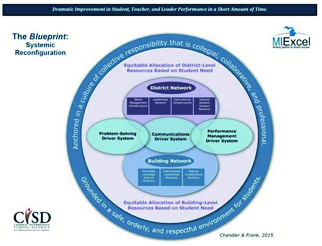
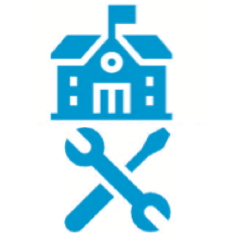
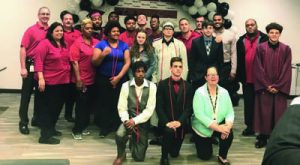 hands-on classes outside of the normal classroom setting at the UAW training site off of 9 Mile Rd. in Warren. “They learn soft skills during the first year, then it’s more hands-on during the second as they really dig into the trades,” Dr. Postell said. “So, they’ll learn about things such as workplace safety and health, the manufacturing process, and look at equipment, then delve into mechanical engineering, welding, electrical, and so forth.” She added, “Students essentially have an opportunity to get the same exposure as candidates would in the full-time Chrysler program. They’re able to put this on their resume, and will receive a certificate of completion and honor cords once successfully graduating from the program.”
hands-on classes outside of the normal classroom setting at the UAW training site off of 9 Mile Rd. in Warren. “They learn soft skills during the first year, then it’s more hands-on during the second as they really dig into the trades,” Dr. Postell said. “So, they’ll learn about things such as workplace safety and health, the manufacturing process, and look at equipment, then delve into mechanical engineering, welding, electrical, and so forth.” She added, “Students essentially have an opportunity to get the same exposure as candidates would in the full-time Chrysler program. They’re able to put this on their resume, and will receive a certificate of completion and honor cords once successfully graduating from the program.”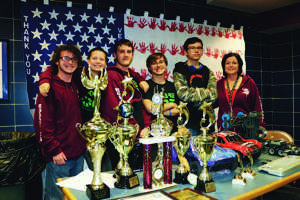
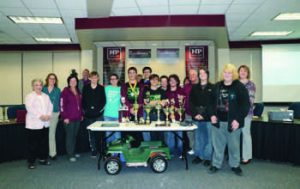 of programming and coding and teaches them the design-thinking process. We have a 3D printer in all environments and teach them basic CAD skills,” said Stephanie Dulmage, Director of 21st Century Learning.
of programming and coding and teaches them the design-thinking process. We have a 3D printer in all environments and teach them basic CAD skills,” said Stephanie Dulmage, Director of 21st Century Learning.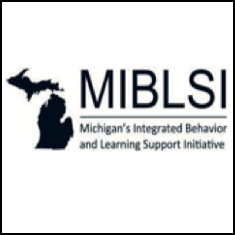
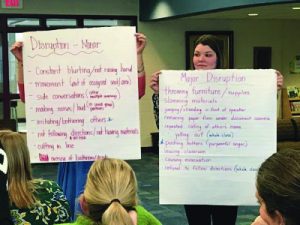 Climate,” said Dr. Michelle Krause, Hazel Park’s Supervisor of Special Education. The Promoting Positive School Climate (PPSC) program helps districts focused on utilizing behavioral resources.
Climate,” said Dr. Michelle Krause, Hazel Park’s Supervisor of Special Education. The Promoting Positive School Climate (PPSC) program helps districts focused on utilizing behavioral resources. individualized attention. These may include a check-in, check-out system in which a student is paired with an adult who acts as their support. It may also involve developing individual behavior plans.
individualized attention. These may include a check-in, check-out system in which a student is paired with an adult who acts as their support. It may also involve developing individual behavior plans.
 stories that seem to be about other subjects. If you’re reading the Free Press or People or listening to NPR, whether the topic is Ford buying the historic depot in SW Detroit or the Brady Bunch house selling, the accompanying multiple meanings that its maybe left with none. But it’s a constant topic, a current running throughout news stories that seem to be about other subjects. If you’re reading the Free Press or People or listening to NPR, whether the topic is Ford buying the historic depot in SW Detroit or the Brady Bunch house selling, the accompanying changes in the communities are an automatic and expected part of the story.
stories that seem to be about other subjects. If you’re reading the Free Press or People or listening to NPR, whether the topic is Ford buying the historic depot in SW Detroit or the Brady Bunch house selling, the accompanying multiple meanings that its maybe left with none. But it’s a constant topic, a current running throughout news stories that seem to be about other subjects. If you’re reading the Free Press or People or listening to NPR, whether the topic is Ford buying the historic depot in SW Detroit or the Brady Bunch house selling, the accompanying changes in the communities are an automatic and expected part of the story. individualism. We get that effort in Ferndale. We have people that will provide it. That gumption, that stick-to-it-iveness impresses me. I don’t want chains that take over individual effort. You can get that anywhere. I want a walkable city where people can go to a number of kinds of businesses that are useful to them. We don’t need a zillion bars.”
individualism. We get that effort in Ferndale. We have people that will provide it. That gumption, that stick-to-it-iveness impresses me. I don’t want chains that take over individual effort. You can get that anywhere. I want a walkable city where people can go to a number of kinds of businesses that are useful to them. We don’t need a zillion bars.”
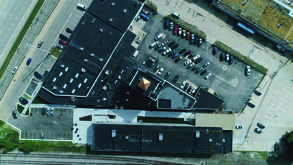 referred to as the Iron Ridge Marketplace. The main marketplace “tower” has some history; originally built as Voigt/Oakman brewery in the late 1930s, it acted as the E-Prize headquarters in the early-mid 2000s before the vacant space was purchased by Iron Ridge Holdings.
referred to as the Iron Ridge Marketplace. The main marketplace “tower” has some history; originally built as Voigt/Oakman brewery in the late 1930s, it acted as the E-Prize headquarters in the early-mid 2000s before the vacant space was purchased by Iron Ridge Holdings.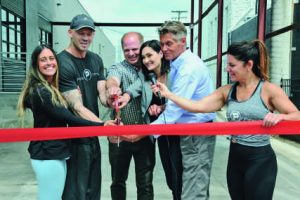 Ridge, and Drifter Coffee hosted pop ups and festivals throughout the spring and summer on the property as they wait for their permanent space to be constructed. Iron Ridge Holdings has held several of their own events too.
Ridge, and Drifter Coffee hosted pop ups and festivals throughout the spring and summer on the property as they wait for their permanent space to be constructed. Iron Ridge Holdings has held several of their own events too.